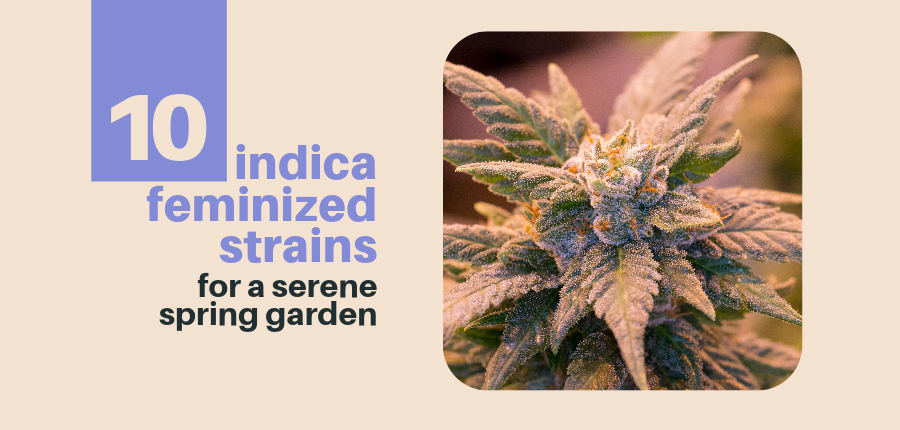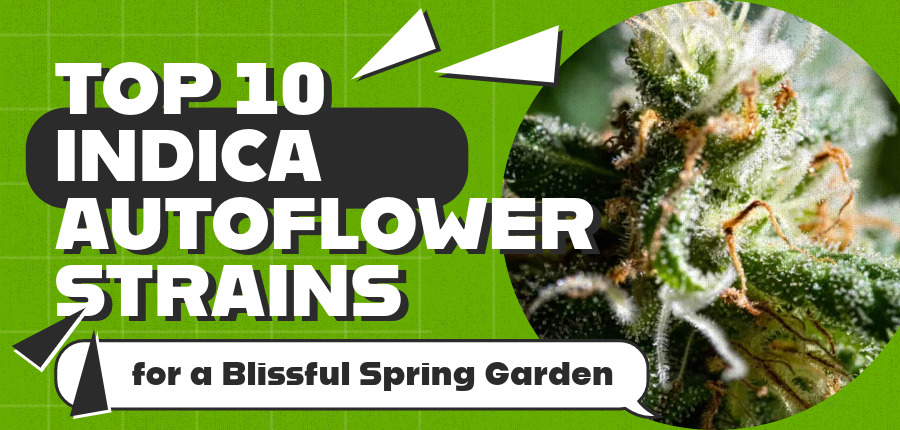




The significance of superior marijuana seeds cannot be overstated in the constantly expanding domain of cannabis cultivation. Whether you’re a novice enthusiast or a seasoned grower, the foundation for a thriving cannabis garden lies in choosing premium-grade seeds. By opting for seeds of exceptional quality, you ensure robust plant growth and substantial development of desirable characteristics, potency, and overall yield. Investing in outstanding genetics lays the groundwork for a gratifying and fruitful journey in cannabis cultivation.
This blog endeavors to present a comprehensive guide that will equip you with the confidence in identifying high quality marijuana seeds proficiently. We understand the overwhelming nature of navigating through the extensive selection of seeds and the challenge of distinguishing between bad seeds and those with the potential to yield exceptional cannabis plants. This guide aims to shed light on the critical factors influencing seed quality, educate you on effective methods of identifying seeds, and provide valuable insights into trustworthy seed sources. By the conclusion of this blog, you will possess the knowledge and tools necessary to make well-informed decisions when choosing marijuana seeds, thereby paving the way for a successful cultivation experience. So, let us embark on a journey to explore the realm of top-notch marijuana seeds and uncover the secrets to cultivating extraordinary cannabis plants.
Before delving into identifying high quality marijuana seeds, it is crucial to establish a basic comprehension of what marijuana seeds entail. Also known as cannabis seeds, marijuana seeds serve as the reproductive units of the cannabis plant. Within them resides the genetic information necessary for their transformation into mature cannabis plants, complete with distinctive traits such as aroma, flavor, potency, and growth characteristics. Each seed holds the potential to give rise to a unique cannabis cultivar, exhibiting its own set of characteristics.
As you navigate the realm of marijuana seeds, you will encounter various types, each offering distinct advantages. Familiarizing yourself with these types will assist you in selecting the most suitable seeds to fulfill your cultivation objectives.
Regular seeds: Traditional and non-genetically modified, regular seeds have a 50/50 chance of producing male or female plants. Breeders often favor regular seeds for their ability to facilitate the creation of new strains by crossing male and female plants.
Feminized seeds: Selectively bred to yield solely female plants, feminized seeds eliminate the need to identify and eliminate male plants that do not generate buds. These seeds offer a higher probability of obtaining a crop with potent flowers, making them popular among growers aiming to maximize their yield.
Autoflowering seeds: Designed for the convenience of novice and experienced growers, autoflowering seeds are genetically engineered to automatically transition from the vegetative stage to the flowering stage based on their age rather than changes in light cycles. Autoflowering seeds typically have a shorter growth cycle, enabling year-round cultivation.
Understanding the anatomy of a seed proves beneficial in effectively identifying high-quality marijuana seeds. A typical marijuana seed comprises three main components:
Seed shell: Serving as the outer protective covering, the seed shell, or seed coat, can exhibit variations in color, texture, and thickness. A healthy seed shell should remain intact and free from cracks or damage.
Embryo: Housing the essential genetic material required for growth and development, the embryo encompasses the embryonic shoot (stem) and the embryonic root. The embryo typically displays a pale or light green hue.
Cotyledons: Also referred to as seed leaves, cotyledons are the initial structures that emerge from the seed upon germination. They give the young seedling initial nutrients until it develops true leaves and commences photosynthesis. Cotyledons generally have a rounded and fleshy appearance, ranging from pale green to yellowish.
Comprehending the anatomy of a marijuana seed empowers you to assess its overall health and potential for successful germination and growth. By examining the seed shell, embryo, and cotyledons, you can glean valuable insights into the seed’s viability and overall quality.
Now that we have established a foundational understanding of marijuana seeds let us proceed to the subsequent section to explore the factors influencing seed quality.
Selecting high-quality marijuana seeds is paramount to ensuring a successful cultivation experience. While it may initially seem challenging, effective methods are available to identify seeds with the greatest potential for germination and growth. Let’s explore some key techniques for identifying high-quality marijuana seeds.
Seed color and patterns: Mature cannabis seeds generally display darker colors like brown, black, or gray. Look for seeds with consistent coloring and avoid those that appear green or light, as they are likely immature or of lower quality. Unique patterns or markings on the seed surface can indicate specific genetic traits.
Size and shape consistency: High-quality seeds often exhibit uniform size and shape within a batch. While size alone is not a definitive indicator of quality, seeds that are too small or irregular in shape may have lower viability.
Seed shell integrity: Carefully examine the seed shell for cracks, dents, or other damage. A healthy seed should have an intact and undamaged shell, as a damaged shell can affect germination and overall seed quality.
Firmness and hardness: Gently squeeze the seed between your fingers to assess its firmness and hardness. High-quality seeds typically feel firm and resistant to pressure, while seeds that are soft or crumble easily may indicate poor viability.
Texture and smoothness: Run your fingers over the seed’s surface to check for irregularities or rough textures. High-quality seeds generally have a smooth and even texture.
Procedure and purpose: The float test is a simple method of determining seed viability. Fill a glass with water and carefully place the seeds in it. Observe whether the seeds float or sink. This test aims to identify viable seeds with a higher chance of germination.
Interpreting the results: Viable seeds generally sink to the bottom of the glass, while non-viable or low-quality seeds tend to float or remain suspended in the water. The float test could be more foolproof but can provide a rough indication of seed viability.
Steps to conduct a germination test: A germination test involves attempting to germinate a few seeds before committing to a larger batch. Follow these steps:
1. Moisten a paper towel or cotton pad with water, ensuring it is damp but not soaking wet.
2. Place a few seeds on the moistened paper towel.
3. Fold the paper towel over the seeds to cover them.
4. Keep the paper towel in a warm, dark place, such as inside a sealed plastic bag.
5. Check the seeds regularly for germination, usually within a few days to a week.
6. Evaluating germination rate: Once the germination period is over, count the number of successfully sprouted seeds. A higher germination rate indicates better seed quality.
By employing visual inspection, touch and feel evaluation, conducting a float test, and performing a germination test, you can gather valuable information about the quality and viability of marijuana seeds. When used together, these methods provide a comprehensive approach to identifying high-quality seeds more likely to yield healthy and productive cannabis plants.
Now that you have understood how to identify high-quality marijuana seeds, the next step is to explore the various avenues through which you can obtain these seeds. Here are some reliable sources where you can find high-quality marijuana seeds:
Seed banks are specialized establishments that store and distribute cannabis seeds from different breeders. Well-known seed banks like Crop King Seeds Canada are recognized for their quality control measures and extensive selection of seeds. These seed banks work closely with breeders to ensure their seed offerings’ authenticity and genetic integrity. Researching and choosing seed banks with positive reviews, established reputations, and a diverse catalog of strains is important.
The internet has revolutionized the accessibility and purchase of cannabis seeds. Online marketplaces provide a convenient platform for browsing and ordering seeds from various breeders and seed banks. Look for reputable online platforms prioritizing customer satisfaction, offering detailed strain information, and providing secure payment and discreet shipping options.
Cannabis expos and events bring together growers, breeders, and enthusiasts from the industry. These gatherings offer a unique opportunity to directly connect with breeders, learn about the latest advancements in genetics, and acquire high-quality seeds. Attend local cannabis expos, trade shows, and festivals to meet reputable breeders, gain insights, and potentially obtain exclusive and rare seed varieties.
Check if your local dispensaries or cultivation supply stores carry a selection of marijuana seeds. These establishments often collaborate with trusted breeders and seed banks to provide customers with reliable and high-quality seeds. Additionally, connecting with local growers or joining cannabis cultivation communities can provide opportunities to source seeds from experienced individuals with firsthand knowledge of specific strains and genetics.
When obtaining marijuana seeds, prioritize reputable sources that emphasize quality control, offer reliable genetics, and have a proven track record of customer satisfaction. Investing in high-quality seeds is essential as they are the foundation for a successful and rewarding cannabis cultivation experience.











Get the cannabis news, resources and tips to help you and your growing adventure succeed.

Crop King Seeds features 600 of the worlds best marijuana strains for sale in Feminized, Autoflowering, medical and regular varieties.
TOLL: +1 (844) 276-7546
USA: +1 (818) 456-1046
CANADA: +1 (236) 260-0658
EMAIL: [email protected]

Copyright 2024 © CROPKINGSEEDS CANADA

Are You 18 Or Over?
YesOr
No By clicking yes, you certify that you are over 18. By using this website, you agree to our legal disclaimer.